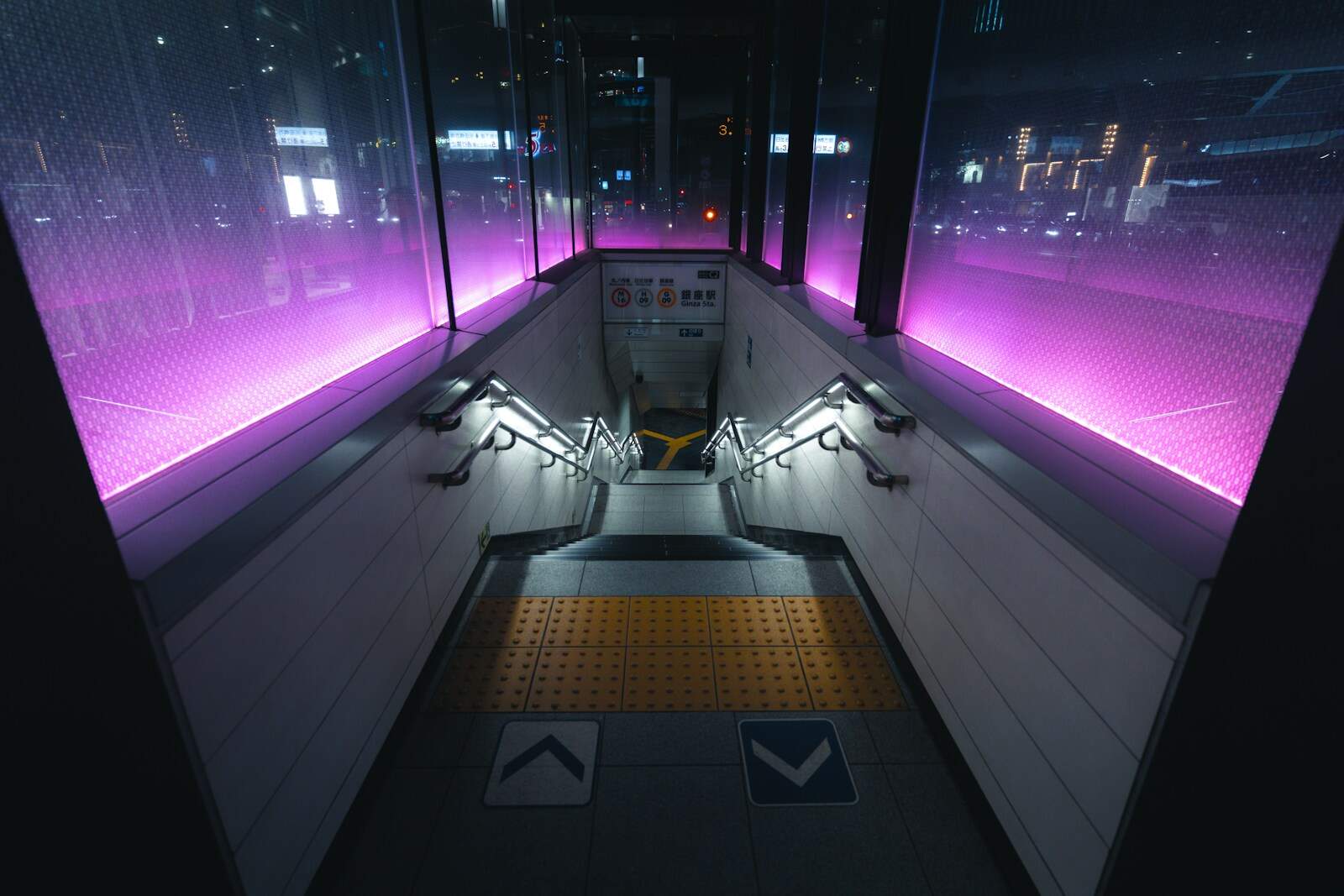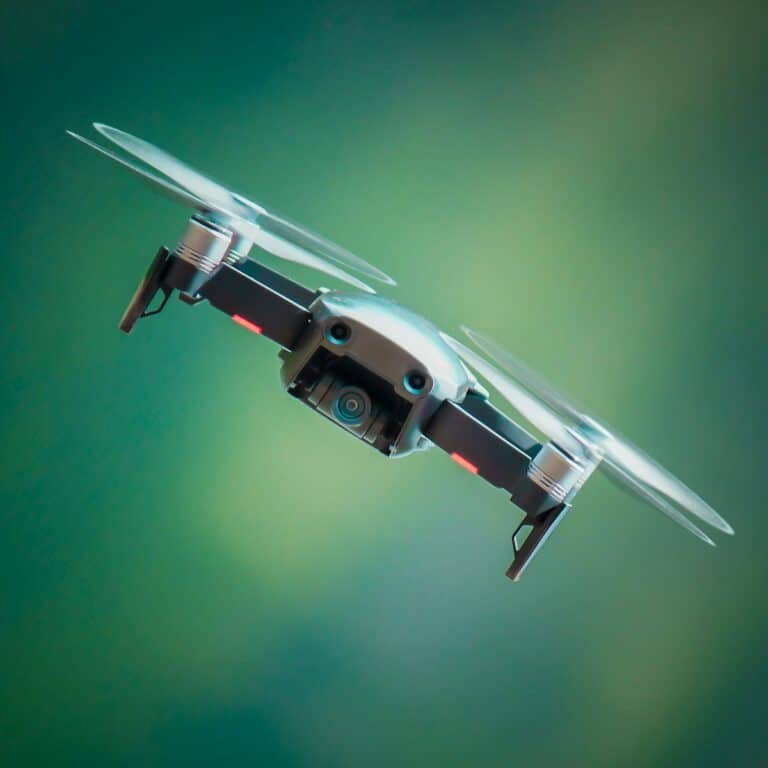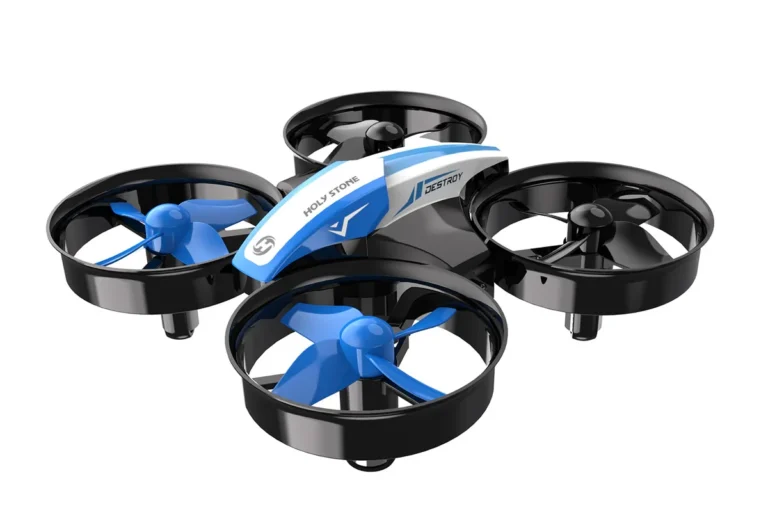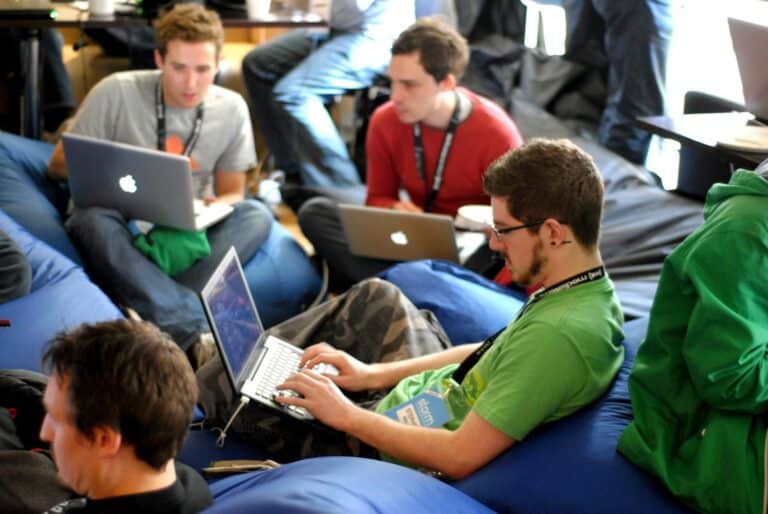Technology changes quickly, leading to many different ideas about the future. There will be changes in the way we live and do business. It’s impossible to predict exactly what will happen in the next few decades, but one thing is certain: the future will be different from today.
10 Predictions for 2050
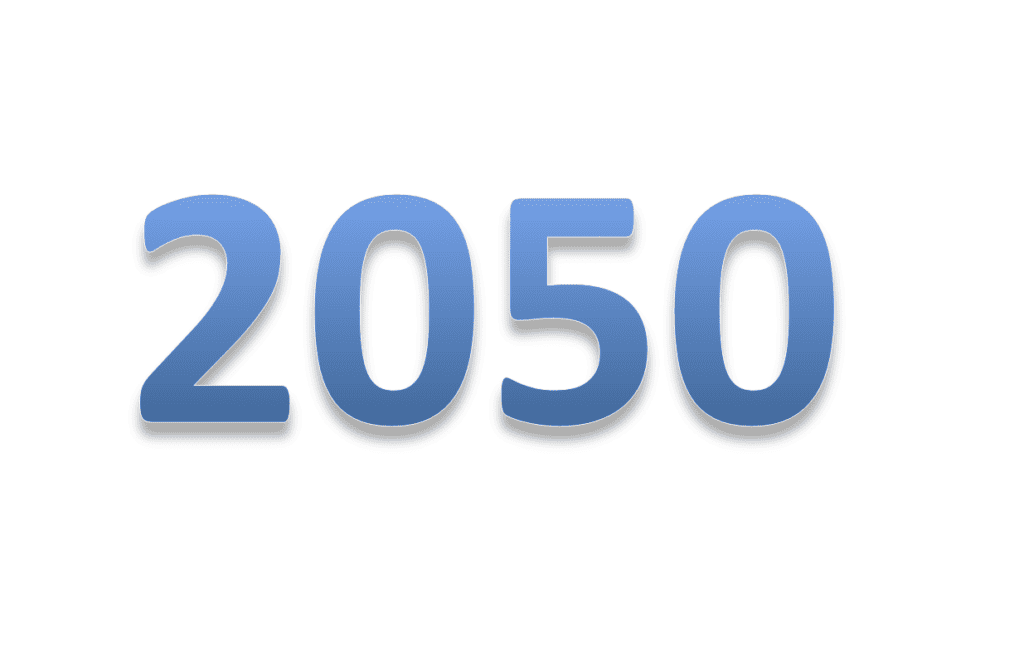
By 2050, the world will be transformed by advances in AI, biotechnology, energy, and space exploration. Here are 10 bold predictions for how technology and society may evolve.
1. Artificial Intelligence Will Be Everywhere
- AI won’t just power apps — it will be deeply integrated into healthcare, education, governance, and daily life.
- Expect AI copilots for work, personal AI assistants managing your home, and even AI‑driven creativity in music, films, and design.
- Ethical frameworks will be critical to prevent misuse.
2. Brain–Computer Interfaces (BCIs)
- Companies like Neuralink are already testing direct brain‑to‑computer communication.
- By 2050, BCIs could allow people to control devices with thought, restore mobility for the disabled, and even enable memory sharing.
- Raises huge questions about privacy and identity.
3. Longevity & Anti‑Aging Breakthroughs
- Advances in gene editing (CRISPR), regenerative medicine, and nanotechnology may extend human lifespans well beyond 100 years.
- Aging could be treated like a disease, with therapies slowing or reversing cellular decline.
- Society will need to adapt to longer working lives and new retirement models.
4. Smart Cities & Hyper‑Connected Infrastructure
- By 2050, most of the world’s population will live in AI‑optimized smart cities.
- Features: autonomous public transport, self‑healing roads, drone deliveries, and buildings that generate their own energy.
- Cities will be designed for sustainability and climate resilience.
5. Quantum Computing Revolution
- Quantum computers could solve problems impossible for classical machines:
- Drug discovery
- Climate modeling
- Ultra‑secure encryption
- By 2050, quantum computing may power global scientific breakthroughs and reshape industries from finance to medicine.
6. Space Colonization & Industry
- Humans will likely have permanent bases on the Moon and Mars.
- Space mining for rare metals and water ice could become a trillion‑dollar industry.
- Space tourism may be accessible to the wealthy, with orbital hotels and sub‑orbital flights.
7. Climate Tech & Geoengineering
- By 2050, climate change will demand radical solutions.
- Technologies may include:
- Carbon capture at scale
- Artificial photosynthesis
- Geoengineering (like stratospheric aerosol injection to cool the planet)
- Renewable energy will dominate, with fusion power possibly commercialized.
8. The Rise of the Metaverse & Mixed Reality
- Virtual and augmented reality will merge with daily life.
- People may work, learn, and socialize in persistent digital worlds.
- Physical and digital economies will blur, with virtual real estate and digital goods rivaling traditional markets.
9. Global Shifts in Work & Society
- Automation and robotics will handle most manual labor.
- Humans may focus on creative, strategic, and empathetic roles.
- Universal Basic Income (UBI) or new economic models could emerge to handle job displacement.
- Education will be personalized, AI‑driven, and lifelong.
10. Human–Machine Integration
- By 2050, the line between humans and machines may blur.
- Examples:
- Cyborg enhancements (bionic limbs, enhanced vision/hearing).
- Digital immortality (uploading consciousness to the cloud).
- Raises profound ethical questions: What does it mean to be human?
🌍 The World in 2050: A Snapshot
- Population: ~9.7 billion (UN projection).
- Energy: Mostly renewable, with fusion as a possible game‑changer.
- Medicine: Preventive, personalized, and AI‑assisted.
- Society: Longer lives, more connected, but facing new ethical dilemmas.
✅ In short: By 2050, humanity will live in a world shaped by AI, longevity science, space exploration, and climate technology — with opportunities for progress, but also challenges around ethics, inequality, and sustainability.
Potential Biggest Public Companies in 2050
1. Apple (AAPL)
- Likely to remain a leader in consumer tech, AR/VR, and personal AI ecosystems.
- Could evolve into a healthtech powerhouse with wearables and longevity tools.
2. Microsoft (MSFT)
- Dominant in enterprise AI, cloud computing, and quantum computing.
- Strong position in AI copilots and productivity software.
3. Alphabet / Google (GOOGL)
- Leader in AI research (DeepMind), quantum computing, and autonomous vehicles (Waymo).
- Expanding into healthcare AI and global internet infrastructure.
4. Amazon (AMZN)
- Still a giant in e‑commerce, logistics, and cloud (AWS).
- By 2050, could dominate AI‑driven retail, robotics, and space logistics (via Blue Origin).
5. NVIDIA (NVDA)
- The backbone of AI hardware and simulation computing.
- Could expand into AI‑driven robotics, self‑driving cars, and metaverse infrastructure.
6. Tesla / SpaceX (TSLA if merged or new ticker)
- Tesla: EVs, robotics, energy storage, solar.
- SpaceX: space colonization, Mars industry, satellite networks.
- A combined Tesla‑SpaceX entity could be the world’s first multi‑planetary corporation.
7. Saudi Aramco (2222.SR) → Transitioned Energy Giant
- If it successfully shifts from oil to renewables, hydrogen, and fusion investment, it could remain massive.
- Otherwise, replaced by new clean‑energy leaders.
8. BYD (1211.HK) or Other Chinese EV/Energy Leaders
- China’s EV and battery leaders could dominate global transport and energy storage.
- BYD and CATL are strong candidates.
9. Novo Nordisk (NVO) / Eli Lilly (LLY) / Future Biotech Giants
- Current leaders in obesity and diabetes drugs.
- By 2050, biotech firms could dominate with longevity, genetic engineering, and anti‑aging treatments.
10. Tencent (0700.HK) / ByteDance
- Asian tech giants could dominate metaverse, gaming, and AI‑driven social platforms.
- By 2050, entertainment + digital economy could rival physical GDP.
🌍 Other Potential Titans by 2050
- Reliance Industries (India) → energy + telecom + retail giant in a fast‑growing market.
- Adani Group (India) → infrastructure & energy dominance.
- Petrobras / Latin American energy firms → if they pivot to renewables.
- Global renewable leaders (NextEra Energy, Enel, Ørsted) → if fusion & solar scaling succeed.
- Healthcare megacorps (UnitedHealth, Pfizer, Moderna) → if they lead in longevity.
✅ Summary
By 2050, the largest companies will likely be:
- Tech + AI leaders: Apple, Microsoft, Alphabet, Amazon, NVIDIA
- Energy + Space giants: Tesla/SpaceX, BYD, Aramco (if it transitions), renewable giants
- Healthcare + Biotech leaders: Novo Nordisk, Eli Lilly, future longevity firms
- Digital economy giants: Tencent, ByteDance, or their successors
Timeline: The Road to 2050
2025–2030
──────────────
- Widespread AI copilots in work & daily life
- Early brain–computer interface trials for medical use
- First commercial quantum computing breakthroughs
- Smart city pilot projects in major global hubs
- Climate tech scaling: carbon capture & renewable dominance
- Space tourism for the wealthy (orbital flights, suborbital hops)
2030–2040
──────────────
- AI fully integrated into healthcare & education
- Longevity therapies (anti-aging drugs, regenerative medicine) in clinical use
- Quantum computing applied to drug discovery & finance
- Expansion of mixed reality & early metaverse economies
- Permanent human presence on the Moon
- Fusion energy pilot plants connected to grids
- Autonomous public transport common in smart cities
2040–2045
──────────────
- Mars missions with semi-permanent human bases
- Brain–computer interfaces available for consumer use
- Majority of global energy from renewable + fusion power
- Space mining begins (rare metals, lunar water ice)
- Longevity treatments extend average lifespans significantly
- Digital economies rival physical ones (virtual real estate, AI-created goods)
2045–2050
──────────────
- Fully immersive metaverse integrated into work & social life
- AI governance support systems in politics & global decision-making
- Cyborg enhancements (bionic limbs, enhanced senses) mainstream
- Universal Basic Income or new economic models adopted widely
- Climate geoengineering deployed to stabilize Earth’s climate
- Human–machine integration blurs identity (digital immortality, mind uploading)
- Interplanetary society: Earth, Moon, Mars connected by space industry
🌍 Big Picture
- 2025–2030 → Foundations (AI copilots, climate tech, smart cities begin).
- 2030–2040 → Expansion (longevity, quantum computing, Moon base, fusion tests).
- 2040–2045 → Breakthroughs (Mars base, space mining, consumer BCIs).
- 2045–2050 → Transformation (post-human integration, interplanetary society).
How Our Lives May Be Different by 2050
Artificial Intelligence and Automation
Artificial intelligence (AI) is already here. It will be a major part of many jobs by 2050. For example, doctors may partner with AI to figure out the best treatment for diseases. AI will also automate more of our everyday jobs. Self-driving cars and trucks could be a normal sight. Robots will do some kinds of dangerous and difficult work.
The Metaverse and Virtual Reality
The metaverse may be a big part of our lives. The metaverse is like a 3D version of the internet. We could use the metaverse for work, shopping, learning, or even hanging out with friends. Virtual reality (VR) is a big part of this vision. By 2050, VR may feel as real as the physical world.
Climate Change and Sustainability
Climate change is a big threat to the world. Scientists and engineers will keep coming up with new ideas to limit climate change. Renewable energy sources like solar and wind power will become very important. There may be new ways of removing carbon dioxide from the air. We may even develop ways to change the weather.
Space Exploration
By 2050, it’s possible that the first humans could be living on the Moon or Mars. Space tourism could grow into a whole new industry. People might even be able to pay for trips to orbit the Earth.
Healthcare and Lifespan
Medicine is getting better all the time. Genetic engineering may be used to treat diseases and extend our lifespans. We may also have nanobots that can travel inside of our bodies. They could repair injuries and fight off diseases at a tiny scale.
Predictions about technology and society
| Change | Impact |
|---|---|
| Advanced AI and automation | Will improve many areas of our lives but may also lead to job losses |
| More focus on the metaverse and VR | May reshape how we interact with one another and the world |
| Growth of space travel | Could create new economic opportunities, but also raises questions about resource access |
| New medical technology | Potential for longer lifespans, but may raise ethical concerns about the ability to alter human biology |
| Increased focus on climate solutions | Necessity will drive innovation, leading to potential new technologies aimed at mitigating climate change issues |
Global Demographics and Urbanization
In the year 2050, we expect to see significant shifts in where people live and how cities develop. The following subsections will explore these trends in more detail.
Predictions for 2050: A Peek into the Future
| Domain | Prediction | Explanation | Potential Impact |
|---|---|---|---|
| Artificial Intelligence & Robotics | AI-powered everything: AI will be deeply integrated into daily life, powering robots that perform complex tasks in every sector, from healthcare to manufacturing. | Advanced algorithms will make autonomous vehicles mainstream, personalize education and healthcare, and revolutionize scientific research. | Increased efficiency and productivity, potential job displacement in some sectors, ethical considerations regarding AI bias and autonomy. |
| Biotechnology & Healthcare | Personalized medicine and human augmentation: Genetic editing and regenerative medicine will enable tailored treatments and potentially reverse aging and disease. | Bioprinting could create organs for transplants, nanobots could diagnose and treat diseases at the cellular level. | Improved life expectancy, enhanced human capabilities, ethical dilemmas surrounding genetic manipulation and accessibility. |
| Climate Change & Sustainability | Living with a changed climate: Rising sea levels and extreme weather events will require adaptation, while renewable energy sources become dominant. | Carbon capture and storage technologies may mitigate climate change, and sustainable practices will be ingrained in everyday life. | Reshaping of communities, potential migration patterns, increased focus on resilience and environmental protection. |
| Space Exploration & Colonization: | Beyond Earth’s cradle: Increased space travel and potential moon and Mars bases could become a reality, with resource mining in the solar system on the horizon. | Advances in rocket technology and private space programs could pave the way for human settlements on other celestial bodies. | Expansion of human presence beyond Earth, potential resource conflicts, ethical considerations regarding space exploration and its environmental impact. |
| Metaverse & VR/AR: | Immersive digital worlds: The metaverse will become a central platform for work, education, entertainment, and social interaction, blurring the lines between physical and virtual realities. | VR/AR technology will create indistinguishable digital experiences, revolutionizing communication, education, and leisure activities. | New forms of creative expression, enhanced collaboration opportunities, potential social isolation and addiction to virtual worlds, ethical concerns regarding privacy and data security. |
Disclaimer: These are just some possible predictions, and the actual future may unfold differently. Many factors can influence future developments, and unforeseen breakthroughs or challenges could significantly change the landscape.
Population Dynamics
Globally, population numbers are not just growing; they’re changing where they call home. By 2050, 68% of the world population is projected to live in urban areas, compared to 55% today. This increase reflects a shift from rural to urban living, with implications for everything from housing to resource management.
Mega-Cities and Urban Planning
As more people flock to cities, we’ll see the rise of mega-cities. Places like New York, Los Angeles, and London will have to adapt their infrastructure and city planning methods to support the denser populations. Issues like housing, transportation, and sustainability will be at the forefront of urban planning discussions, seeking innovative solutions for the swelling urban populations.
- New York: Predicted to tackle housing demands with new building technologies.
- Los Angeles: Expected to focus on sustainable transport systems.
- London: Likely to expand its urban area to accommodate population growth.
Migration and Borders
The movement of people across borders will continue to shape societies around the globe. As some areas, like coastal cities, battle rising sea levels, the number of environmental refugees could rise substantially. Migrants, both voluntary and forced, will move to cities that offer more stability and opportunities, potentially testing the borders and humanitarian policies of their new host countries. These shifts may compel a reevaluation of immigration policies and challenge cities to become more inclusive and resilient to these changes.
Technological Advancements
As we peer into the future towards 2050, a wave of technological advancements promises to reshape our daily lives. From the rise of sentient machines to groundbreaking medical treatments, these changes will be the cornerstone of the upcoming era.
Artificial Intelligence and Robotics
Artificial intelligence (AI) and robotics will be pivotal by 2050, as they become deeply integrated into various industries and day-to-day activities. AI is expected to progress towards Artificial General Intelligence, where machines possess the ability to understand and learn any intellectual task that a human can. This will significantly influence AI-powered markets, with robots carrying out complex tasks, from manufacturing to personal assistance, with greater efficiency and autonomy.
Healthcare Innovations
Medicine will transform with the integration of biotechnology and personalized treatment plans. Breakthroughs in genome editing and regenerative medicine will potentially cure diseases that are today considered incurable. Expect to see gadgets that can monitor one’s health in real-time and predict potential ailments, facilitating early intervention.
Infrastructure and Smart Cities
By 2050, construction and infrastructure are predicted to evolve into smart cities, boasting efficient energy use, intelligent transport systems, and sustainable living spaces. The use of AI in urban design will lead to cities that not only function efficiently but adapt to the needs of their residents in real time, promoting a high quality of life.
Space Exploration Progress
Science and technology will thrust space exploration into a new epoch. Increasingly sophisticated spacecraft and habitation technologies will open the door to deeper solar system exploration and possibly the colonization of other planets. The space industry’s growth will likely bolster earthbound technologies through materials and innovations originally developed for space travel.
Environmental Forecast
As we gaze into the future towards 2050, the environmental forecast reveals significant challenges and opportunities in addressing climate change, managing our resources, and conserving nature.
Climate Change Repercussions
With increasing concentrations of CO2, scientists expect the global average temperature could rise between 1-1.5°C if CO2 levels stabilize after 2050. However, if emissions aren’t reduced, we may see an alarming increase of 4.5-5°C. This warming could intensify wildfires and increase the frequency of floods, affecting environments and communities globally. Innovative green technologies are crucial to countering these effects.
- Floods: Increased risk in coastal and low-lying areas
- Wildfires: Likely to become more common and severe
Energy and Resource Management
The transition to sustainable energy sources is vital for curbing greenhouse gas emissions. Projections suggest that implementing global carbon pricing to reduce emissions by nearly 70% relative to a baseline scenario by 2050, could be achieved with a minimal impact on economic growth—a slowdown of only 0.2 percentage points per year on average.
- Green Technologies: A core component in reducing carbon footprint
- Economic Impact: Slight slowdown in growth, balanced by long-term ecological benefits
Conservation of Nature
By 2050, proactive measures could dramatically decrease the population exposed to hazardous air pollution from 50% to 7%. Maintenance and expansion of natural habitats are paramount to safeguard biodiversity and human health. The key to this positive outcome lies in adopting policies that prevent the business-as-usual scenario and prioritize nature conservation and pollution control.
- Air Pollution: A significant threat to public health, requiring stringent regulations
- Conservation Efforts: Essential for protecting biodiversity and ecosystems
Economic and Business Trends
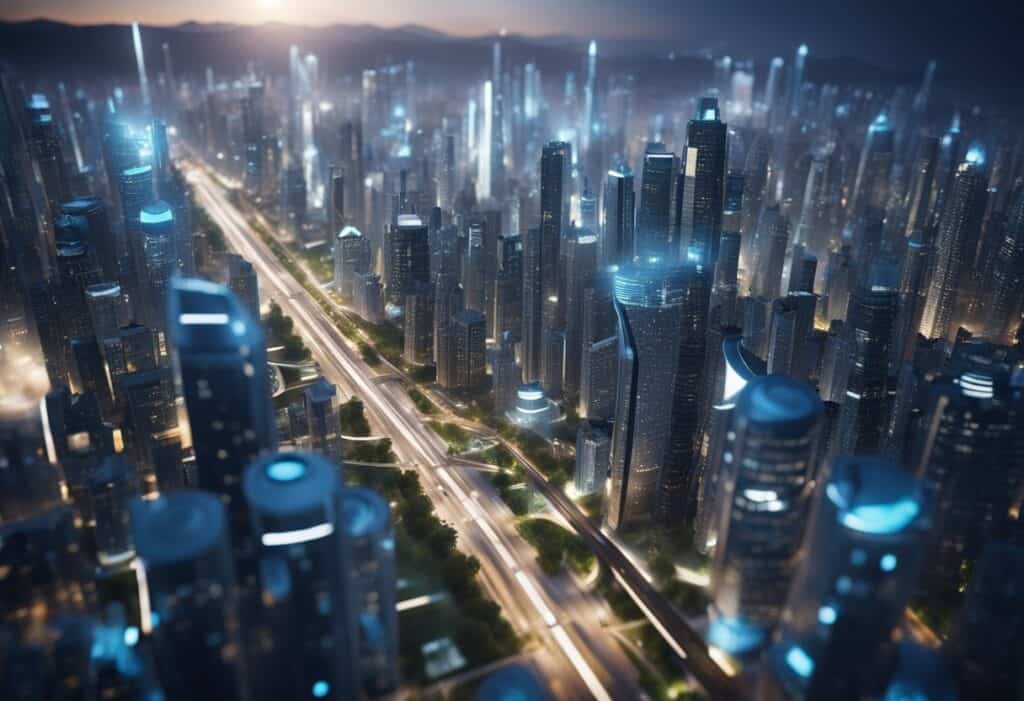
In the world of 2050, economic growth and business development are likely to be influenced by a shift in global market dynamics, the emergence of innovative business models, and the evolution of finance.
Global Market Dynamics
By 2050, the global economy is expected to undergo significant transformation. Markets in emerging economies like China and India are predicted to grow at a faster pace compared to advanced economies like the United States and the European Union. The strength of these nations lies in their large populations coupled with rapid technological advancement, which could lead to them becoming new leaders in global economic influence. AI-powered markets are poised to create a seismic shift in how trade and business are conducted, promoting efficiency and potentially altering the traditional economic pecking order.
Innovative Business Models
Businesses are set to evolve with innovative models that heavily integrate technology in their operations. The proliferation of progress in AI and other technologies means companies could operate with fewer employees, leveraging machines and algorithms to streamline their processes. This could revolutionize industries and job roles, creating a landscape where flexibility and adaptability become the cornerstones of business success.
Financial Evolution
The financial landscape is likely to witness its own form of progress, moving towards potentially going moneyless with transactions being digital and seamless. Blockchain technology might redefine accounting practices by creating transparent and decentralized ledger systems. This could influence not just personal finance but also corporate finance, as businesses strive for increased efficiency and security in their financial dealings.
By understanding these trends, readers can gain insights into the interplay of economy and business strategies as we look towards the future.
Societal Shifts

The year 2050 is poised to witness profound changes in how people learn, work, and interact within the broader fabric of society.
Education and Workforce Transformation
The landscape of education is fast evolving, with digital advances redefining how knowledge is delivered and received. By 2050, traditional classroom settings will have given way to more adaptive, personalised learning experiences. Work itself will transform, as new skills become necessary to navigate an ever-changing technological landscape. Income inequality may rise as a result of different access levels to education and training, making equal opportunity initiatives crucial.
- Education: Increased reliance on technology to tailor learning.
- Workforce: Skills demanding creativity and a personal touch rise in value.
Health and Mortality
Healthcare in 2050 will likely be defined by advancements in tackling diseases and managing aging. People may live longer due to better medical knowledge and technologies, potentially pushing the average lifespan to over 80 years. However, this increased longevity will come with the need to address age-related conditions more effectively and will have a significant impact on social structures and supports as society adjusts to an aging population.
- Mortality: Decrease due to advancements in medicine.
- Aging: Spike in age-related health services and supports.
Social and Cultural Integration
As we move towards 2050, society will become more interconnected than ever, fostering social and cultural integration on an unprecedented scale. This will offer unique opportunities for humanity to become more unified, while raising challenges to maintain services that have a human face. Achieving a cohesive mankind amid such diversity will require concerted efforts to foster inclusion and understanding across different walks of life.
- Social: Greater interconnection leads to diverse communities blending.
- Cultural: The fabric of society richer through exchange and interaction.
Geopolitical Movements

As we look toward 2050, the shifting landscape of global power and international relationships is crystal clear. Nations are maneuvering for position on the world stage, peace and conflict are in a delicate balance, and countries work together to shape future policies.
Nation States and Superpowers
United States and China: They stand as the dominant superpowers, with their influence radiating out across the globe. The United States, rich in technological prowess, carries a significant impact on global security and economic standards. China, with its rapid growth, challenges the traditional dominance of the US, with economic ties that span continents.
- European Union: This unique political entity continues to wield substantial influence, with its member states often moving towards more unified policies and regulations. Yet, internal challenges and external pressures test the cohesion of the EU.
Security, Conflict, and Peace
- Wars and Conflicts: Although the specter of war hangs heavy, the century has brought about a greater push for peaceful resolutions. Conflicts, where they do erupt, are often met with international efforts to pacify and mediate, highlighting a trend towards minimizing violence.
- Security: It’s a complex web of alliances and agreements. Nations prioritize their security partnerships, often through organizations such as NATO, focusing heavily on cybersecurity and technology to safeguard against new-age threats.
Global Cooperation and Policies
- Policies: National policies no longer operate in isolation. Climate change, cyber threats, and trade require a multilateral approach, with nations coming together to devise strategies that stretch across borders.
- News and Information: How nations interact with and control the flow of information has become pivotal. The exchange of news between countries is instantaneous, influencing geopolitics almost as soon as stories break.
Collectively, these movements define the geopolitical trends of the mid-21st century, where power is fluid, peace is sought but fragile, and cooperation is key to tackling the era’s greatest challenges.
Life and Culture in 2050
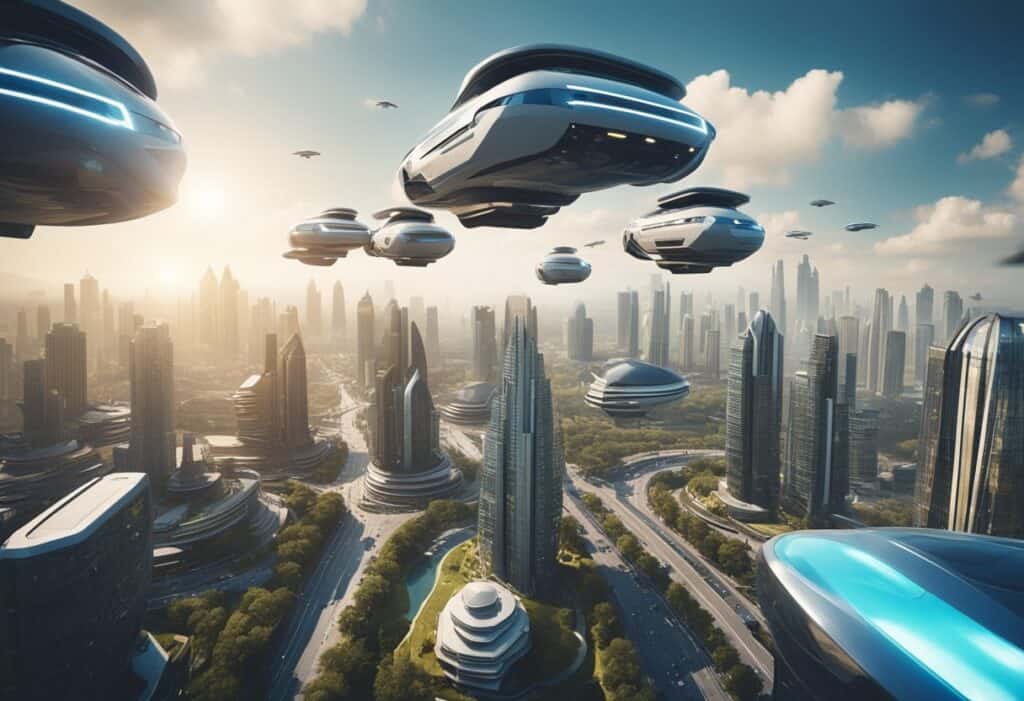
As we approach mid-century, daily experiences, entertainment, and cultural touchstones will have evolved significantly due to advances in technology, changes in the environment, and shifts in social behavior.
Day-to-Day Living
By 2050, smart homes equipped with automation and AI assistance are commonplace, making mundane tasks like cooking and cleaning more efficient. The impact of climate change has sparked a wave of zero-waste eats and sustainable food practices, leading to a rise in future supermarkets that specialize in eco-friendly packaging and local produce. It’s not unusual to see vertical gardens and in-home food cultivators in New York apartments, offering fresh ingredients at one’s fingertips.
Entertainment and Leisure
The entertainment sphere will have significantly transformed, with augmented and virtual reality technologies offering immersive experiences that surpass anything available in the present-day. Social media platforms are no longer just for sharing photos or updates but are integrated platforms for experiencing live events, collaborative gaming, and virtual gatherings. Biotech improvements have also led to personalized leisure activities, aligning with one’s genetic predispositions for health and enjoyment.
Cultural Evolution
Cultural shifts are prominent, largely reflecting the global connectivity the internet has provided. By 2050, languages once considered minor have spread, with French-speaking communities in Africa flourishing. Moreover, the aftermath of the Covid-19 pandemic continues to influence social interactions, with an increased focus on healthcare and a push towards remote working environments. Biotechnological innovations have also fueled cultural debates around ethics and identity, as biotech becomes more integrated into everyday life.
Food Security and Agriculture

By the year 2050, it’s expected that food demand will rise significantly due to population growth. This section explores how food production and sustainable agriculture will play vital roles in meeting these demands while addressing the challenges of climate change and preserving resources for future generations.
Advances in Food Production
Innovative techniques are ramping up food production to meet future demands. Precision agriculture utilizes data analysis to optimize planting, harvesting, and watering, boosting crop yields while conserving resources. Also on the rise are vertical farms and lab-grown foods, which can produce food closer to urban consumers, even in the absence of soil or natural light.
Vertical Farms:
- Utilize stacked layers to grow crops
- Recycle water, reducing usage
- Can be integrated into urban areas
Lab-Grown Foods:
- Cultured from cells, without the need for whole plants or animals
- Potential to lessen reliance on traditional land-intensive farming
- Reduce the carbon footprint by lowering transportation and methane emissions
Sustainable Agriculture
The move toward sustainable agriculture is critical to ensuring long-term food security without depleting natural resources. Practices like crop rotation, organic farming, and the use of natural pest controls are designed to maintain soil health and reduce dependency on fossil fuels. Additionally, the implementation of drought-resistant crops will be crucial in areas prone to water scarcity.
Sustainable Practices:
- Crop rotation to replenish soil nutrients
- Reduced use of synthetic fertilizers and pesticides
- Integration of renewable energy sources in farming operations
The move toward sustainable agriculture is not merely a trend; it is an essential shift to support a growing population. Future supermarkets may feature zero-waste eats with minimal packaging, reflecting a larger consumer preference for sustainability in the food chain. These efforts collectively aim to create a food-secure world by 2050 with minimal environmental impact.
Frequently Asked Questions
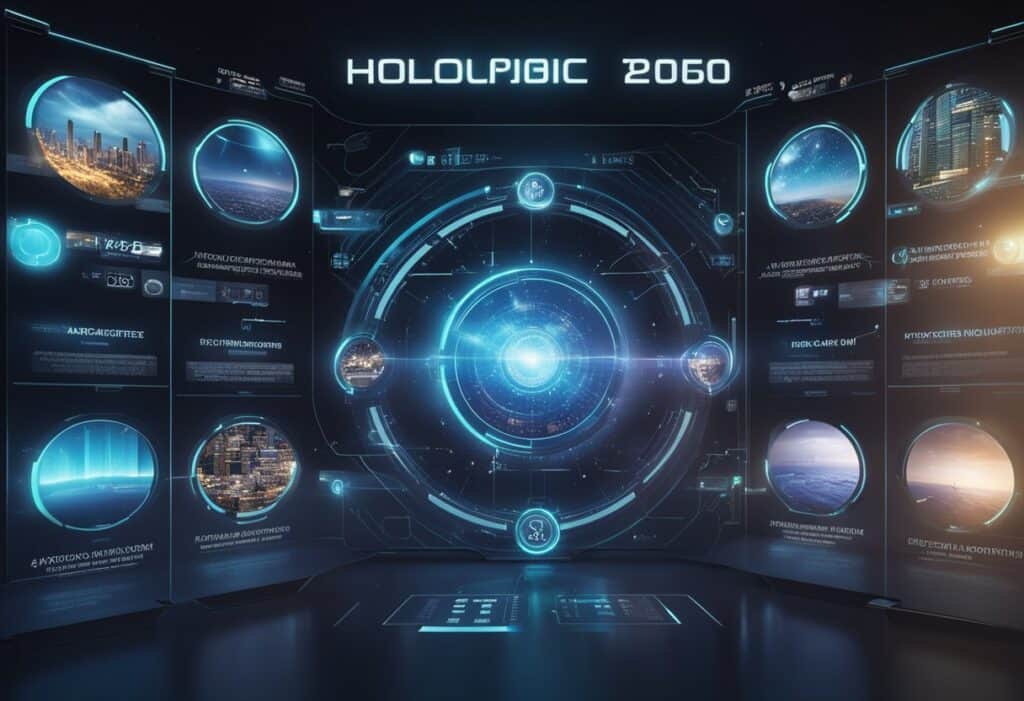
As we navigate through the transforming landscape of technology and climate, let’s explore some of the pressing questions people have about the year 2050.
What technological advancements are expected by 2050?
By 2050, technology is anticipated to be even more deeply integrated into our lives. Advances in artificial intelligence, quantum computing, and bioengineering promise to redefine what’s possible, enhancing both work efficiency and recreational activities.
How will the job market evolve by the year 2050?
Experts predict that automation and AI will significantly reshape the job market by 2050, creating new roles while rendering some occupations obsolete. Skills in technology management and adaptability will be highly valued, necessitating continuous learning and upskilling.
Which countries are projected to lead in global economy by 2050?
Emerging economies like India and China are expected to rise in economic dominance by 2050, challenging the current hegemony of Western countries. The global economic landscape will likely experience a shift in power due to these countries’ significant population and industrial growth.
How will daily human life change by 2050?
Daily life by 2050 may be marked by the widespread use of smart devices, automated transportation, and advanced medical technologies, directly impacting how people live, travel, and manage their health. Urban environments are also likely to see significant changes, fostering a more connected lifestyle.
What are the anticipated developments in space exploration by 2050?
The next few decades hint at notable advancements in space exploration, with potential manned missions to Mars, the establishment of lunar bases, and even commercial space travel. Space agencies and private companies may collaborate more to push the boundaries of human presence in space.
How might climate change affect the world by 2050?
Forecasts indicate that climate change will have diverse impacts worldwide by 2050. Population regions might face challenges such as food shortages, extreme weather, and rising sea levels. However, the extent of these effects will strongly depend on the actions taken today to mitigate climate risks.

